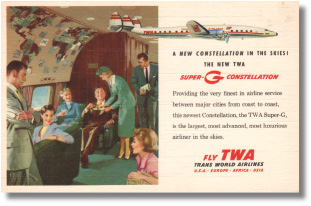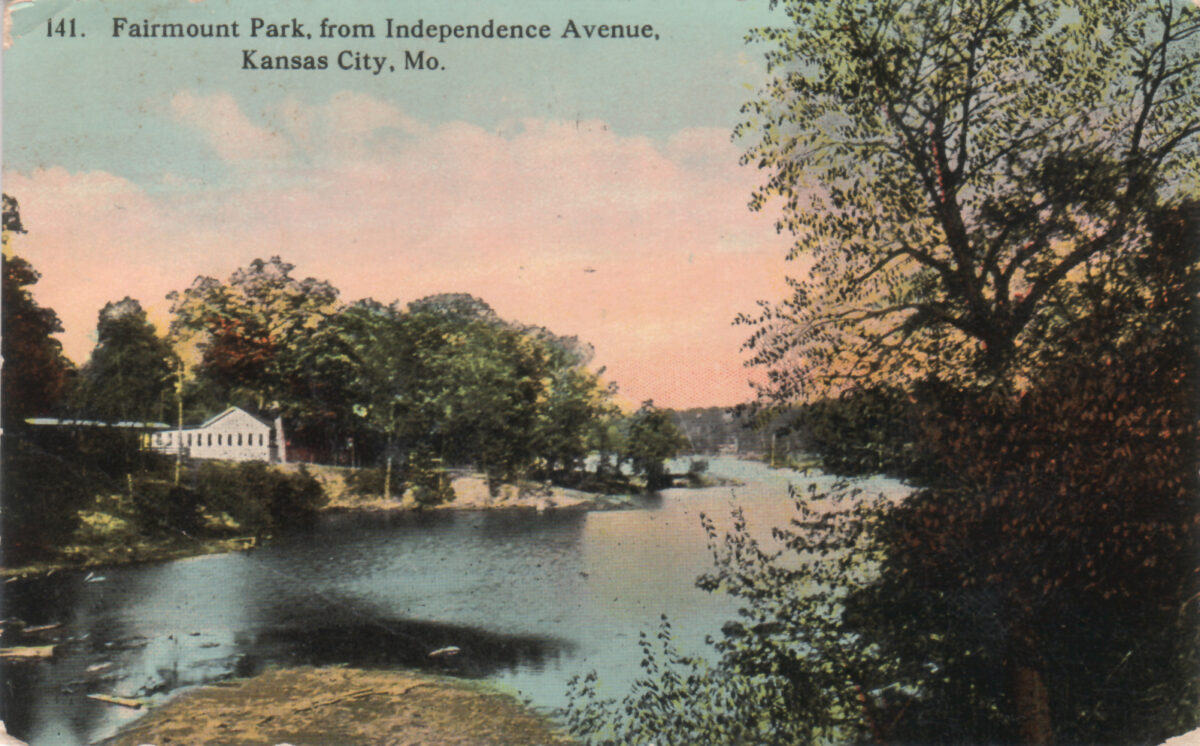
“Providing the very finest in airline service between major cities from coast to coast, this newest Constellation, the TWA Super-G, is the largest, most advanced, most luxurious airliner in the skies.”
Originally designed to carry 51 passengers and a crew of seven, with a cruising speed of 300 miles per hour, the Constellation was introduced as a military plane during World War II.
It was designed by Kelly Johnson, who also designed the Electra (Amelia Earhart’s plane) and the famous P-38 Lightning fighter used extensively in the Pacific theatre of the war.
Following World War II, modifications were made to the plane, re-fitting it for commercial airline use.
Formerly Trans-Continential & Western Air, TWA was founded by Howard Hughes who ordered the planes by the dozens.
Regular bodies were Constellations, and the long bodies were “Super” Constellations.
Even the super models had some limitations on range and speed, but with the “G” version, TWA was able to offer non-stop coast-to-coast flights and usually non-stop trans-Atlantic flights.
Constellations were a common sight in the Kansas City Airport, TWA’s main overhaul and technical center.
The “Connie” served TWA for more than 22 years as the backbone of its long-haul national and international fleet.
Today, the Airline History Museum located at the old Municipal Airport (Charles B. Wheeler Downtown Airport) houses one of the last remaining “Connies.”
Upon completion of her restoration, she was christened “Star of America,” but the crew refers to her as “’37 Charlie,” since 1937 being her original in-service date.

















